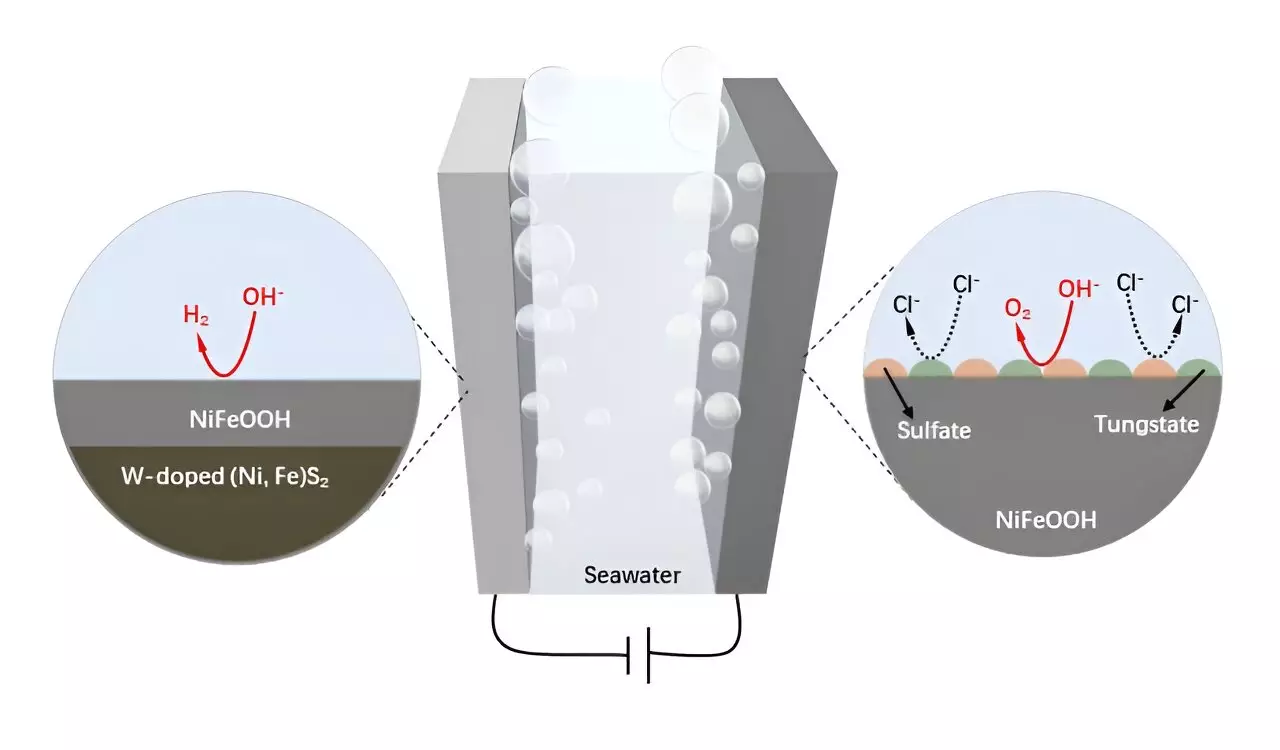As the world grapples with the need to reduce carbon emissions, innovative energy solutions are more important than ever. Seawater electrolysis stands out as a potentially transformative technology that could lead to sustainable hydrogen production while utilizing an abundant resource: seawater. Hydrogen, viewed as a clean energy carrier, offers promise in decarbonizing a range of sectors, from transportation to power generation. Despite its potential, the widespread application of seawater electrolysis faces significant obstacles, primarily due to material inefficiencies and costs. Key among these challenges are the detrimental effects of chloride ions on electrodes, leading to corrosion and degradation during the electrolysis process.
The quest for efficient seawater electrolysis often confronts two major pitfalls: corrosion of electrodes due to chloride ions and the expense associated with effective catalysts. The presence of chloride in seawater can provoke unwanted oxidation reactions at the anode, complicating performance outcomes. Moreover, effective catalytic materials that can withstand these environments are frequently expensive and difficult to source. This duality of issues has hindered the transition from laboratory-based studies to real-world applications, emphasizing the urgent need for innovative solutions to bolster electrode performance under harsh conditions.
Recent research led by distinguished academics has introduced a promising strategy involving self-supported nickel-iron (NiFe) materials as bifunctional catalysts for both hydrogen evolution and oxygen evolution. These materials are not only cost-effective, but they also exhibit high intrinsic activity, making them prime candidates for enhancing the efficiency of seawater electrolysis. The introduction of wood-based carbon (WC) structures as substrates for these catalysts is another breakthrough; their hierarchical porous structure and superior conductivity provide an ideal platform for the NiFe catalyst to thrive.
In a groundbreaking study published in *Science Bulletin*, a collaboration between researchers from several universities gave rise to a novel WC-supported tungsten-doped NiFe sulfide (W-NiFeS/WC) electrode. This innovative approach included a unique preparation method that enhances performance characteristics through the introduction of tungsten, known for its superior anti-corrosive properties. The end result is a robust electrode that not only maintains its integrity but also displays exceptional electrochemical performance.
The newly developed W-NiFeS/WC electrode exhibits a remarkable three-dimensional porous structure, with microchannels that allow for optimal flow during electrolysis. This design promotes high porosity and electrical conductivity, essential factors for maximizing efficiency in energy conversion. The research found that the electrode outperforms traditional catalysts in both the oxygen and hydrogen evolution reactions, suggesting significant implications for future energy systems. The structural evolution of these electrodes under operating conditions leads to the self-generation of protective tungstate and sulfate species, enhancing their longevity and catalyzing hydrogen production efficiently.
Remarkably, this research not only seeks to advance efficient hydrogen production but also aligns with principles of sustainability. By leveraging wood waste to create effective catalyzing agents, researchers embody the concept of the circular economy, effectively minimizing waste while fostering innovative energy solutions. This approach emphasizes the dual benefit of enhancing energy efficiency while also addressing environmental concerns, marking a significant step toward sustainable practices in energy resource management.
The advancement of seawater electrolysis through innovative materials represents a crucial leap toward a sustainable energy future. By addressing existing challenges while promoting ecological soundness, such initiatives offer a glimpse into a cleaner, more resilient world powered by renewable hydrogen.


Leave a Reply